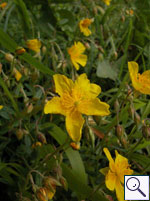|
||||||
|
Key for the identification of the known mines of British |
1a > Leaf-miner and case-bearer: The larva lives outside the mine, protected by a case, and feeds on the underlying plant tissues via a hole cut in the epidermis. From that point it eats away as much leaf tissue as it can reach without fully entering the mine. Mine does not contain frass (Coleophora species) |
1b > Leaf-miner, but not a case-bearer: The larva lives mainly inside the mine. Mine usually contains frass. In later instars the larva may live sandwiched between two more or less circular sections cut from the leaf. |
2a > Leaf-miner and case-bearer: The larva builds a case from leaf fragments, adding sections as it grows, creating a long narrow and distinctive case. A large, composite leaf case of 10-15 mm length, the fully developed case consisting the three succesive leaf fragments. Case light brown, bivalved; mouth angle c. 45°. |
|
Coleophora ochrea (Haworth, 1828) [Lepidoptera: Coleophoridae]. |
2b > Leaf-miner and case-bearer: The case resembles that of C. violacea, but does not lie so flat again the leaf as this species (having a mouth angle of 30 to 50°). C. violacea also has a case which bulges in the middle, whereas in C. potentillae the case tapers towards the posterior. Immediately after emergence the larva makes a full depth, quickly widening, corridor, with frass as small grains in a broad central band. Finally results a blotch of 2 x 5 mm, from which the youth case is cut. The fully developed case is a hairy, greyish brown to silver grey lobe case of about 1 cm long, with a clearly laterally compressed end; the mouth angle is about 90°. The case is difficult to separate from that of C. ochripennella. |
|
Coleophora e been recorded in Britain. These are syngenesiae (Hardy) and horticola (Goureau) which can only be distinguished by the male genitalia. Both species are widespread in Britain and elsewhere, although syngenesiae is almost entirely restricted to Asteraceae. Records on Asteraceae not based on examination of male genitalia are treated in this account as Chromatomyia 'atricornis'. Chromatomyia syngenesiae is recorded on Helianthus elsewhere but not yet on Helianthus in Britain. |
Chromatomyia
horticola (Goureau, 1851) [Diptera: Agromyzidae] |
3b > Leaf-miner: A linear mine commencing with a conspicuous regular spiral and then continuing a considerable distance more or less straight (Spencer, 1976: 245). Upper-surface corridor. The first part is wound in a dense spiral that quickly turns brown. The spiral continues in a long, generally unbranched corridor that maintains almost the same width. Frass in long thick strings. When the mine is positioned near the leaf margin the spiral part may be missing; the thick frass strings then are sufficiently characteristic. Pupation outside the mine; exit slit in lower epidermis. Long upper surface gallery starting with a spiral of 6 to 8 turns (as shown). Frass in conspicuous narrow linear lines. |
|
Liriomyza eupatorii (Kaltenbach, 1873) [Diptera: Agromyzidae]. |
3c > Leaf-miner: The mine begins as a long, quite narrow corridor, usually not far from the tip of a leaf segment. Usually this corridor follows the leaf margin for some distance, but it may also run freely through the blade and may then be stongly contorted. In the end the corridor is directed towards the midrib, where an elongated blotch is formed, overlying the midrib and some of the larger lateral veins. Frass in a nearly continuous line in the initial corridor, in scattered lumps in the later part of the mine. Primary and secondary feeding lines very conspicuous when seen in transparancy. Pupation outside the mine. The mine starts as a very narrow corridor, usually close to the tip of a leaf segment and following the leaf margin. The later section of the corridor approaches the main vein, where an elongated blotch is made with long broad finger like extensions that lay over the secondary veins. In the initial corridor the frass forms an almost continuous line, in the blotch it is distributed in large scattered lumps. In fresh mines the secondary feeding lines are clearly visible. |
|
Trypeta zoe Meigen, 1826 [Diptera: Tephritidae]. |
3d > Leaf-miner: A short linear mine in first instar, later producing a circular or oval blotch. Frass is excreted in a black mass prior to pupation; puparium firmly glued with frass within the mine (Spencer, 1976: 306). Large, whitish, upper-surface blotch, preceded by a short corridor that often is overrun later by the developing blotch. The larva hardly produces any frass; the few grains that are present are black and rather coarse. But when the larva is about to pupate, it empties its intestine, which has the effect that the puparium is anchored in the mine by dried frass. The initial gallery by the first instar larva then leads to a whitish blotch. The puparium is fixed to the inside of the mine by an accumulation of frass. |
|
Calycomyza humeralis (von Roser, 1840) [Diptera: Agromyzidae]. |
3d > Leaf-miner: In the first instar the larva mines the leaves, forming short, irregular, blotch-like mines, but in later instars it lives externally, feeding in spun leaves and often twisting those of tender shoots. Larval head light-brown or yellowish brown, edged with black postero-laterally, ocellar area blackish; prothoracic plate black edged with whitish anteriorly; abdomen dull dark green; pinacula distinct, black, sometimes brownish but with black bases to setae; anal plate large, black (Bradley et al., 1973). Small, full depth mine without a definite shape; little frass. Some silk is deposited in the mine. The larva soon leaves the mine and continues feeding among spun leaves. |
|
Cnephasia incertana (Treitschke, 1835) [Lepidoptera: Tortricidae]. |
| Last updated 09-Jul-2020 Brian Pitkin | ||

